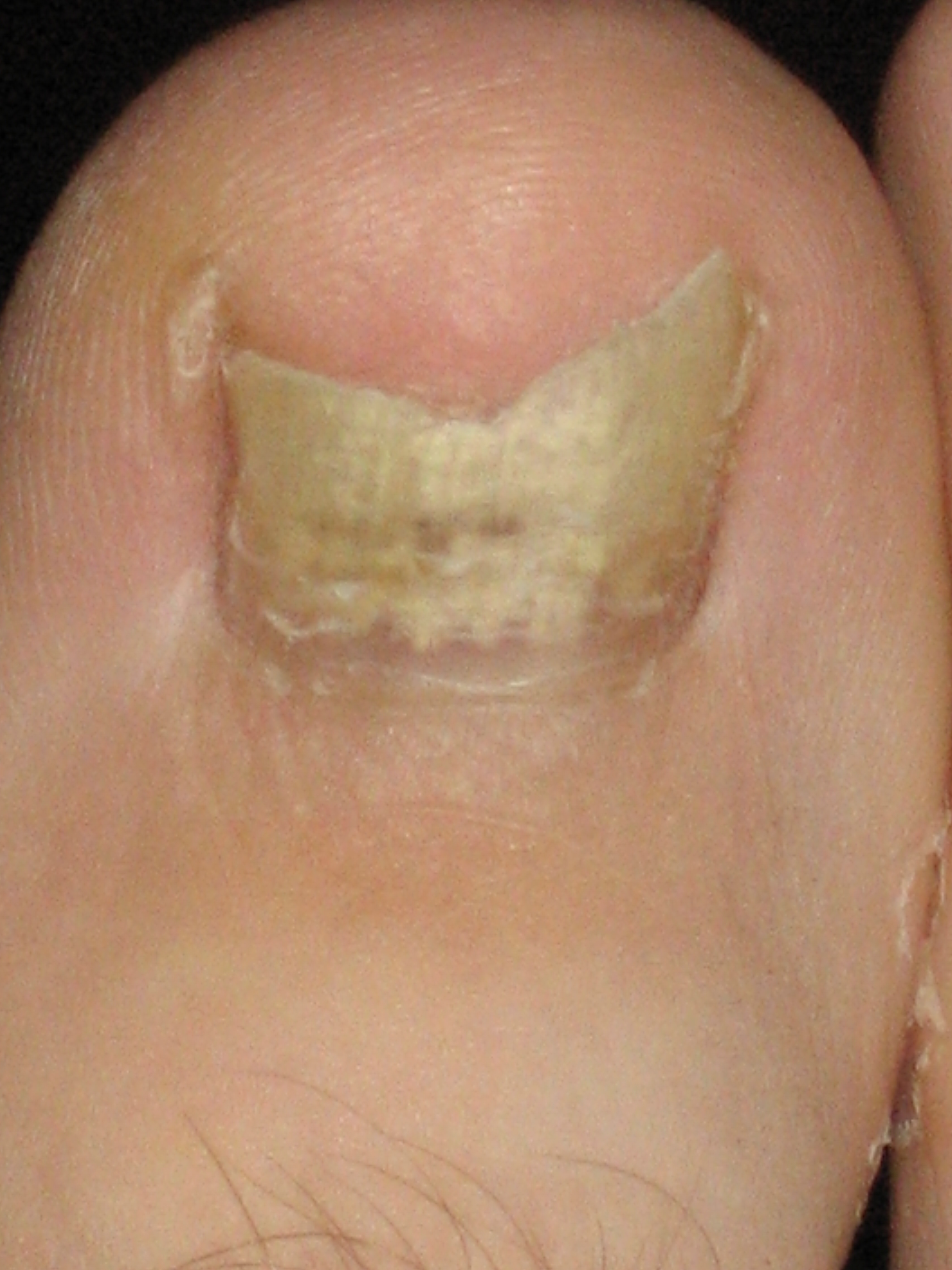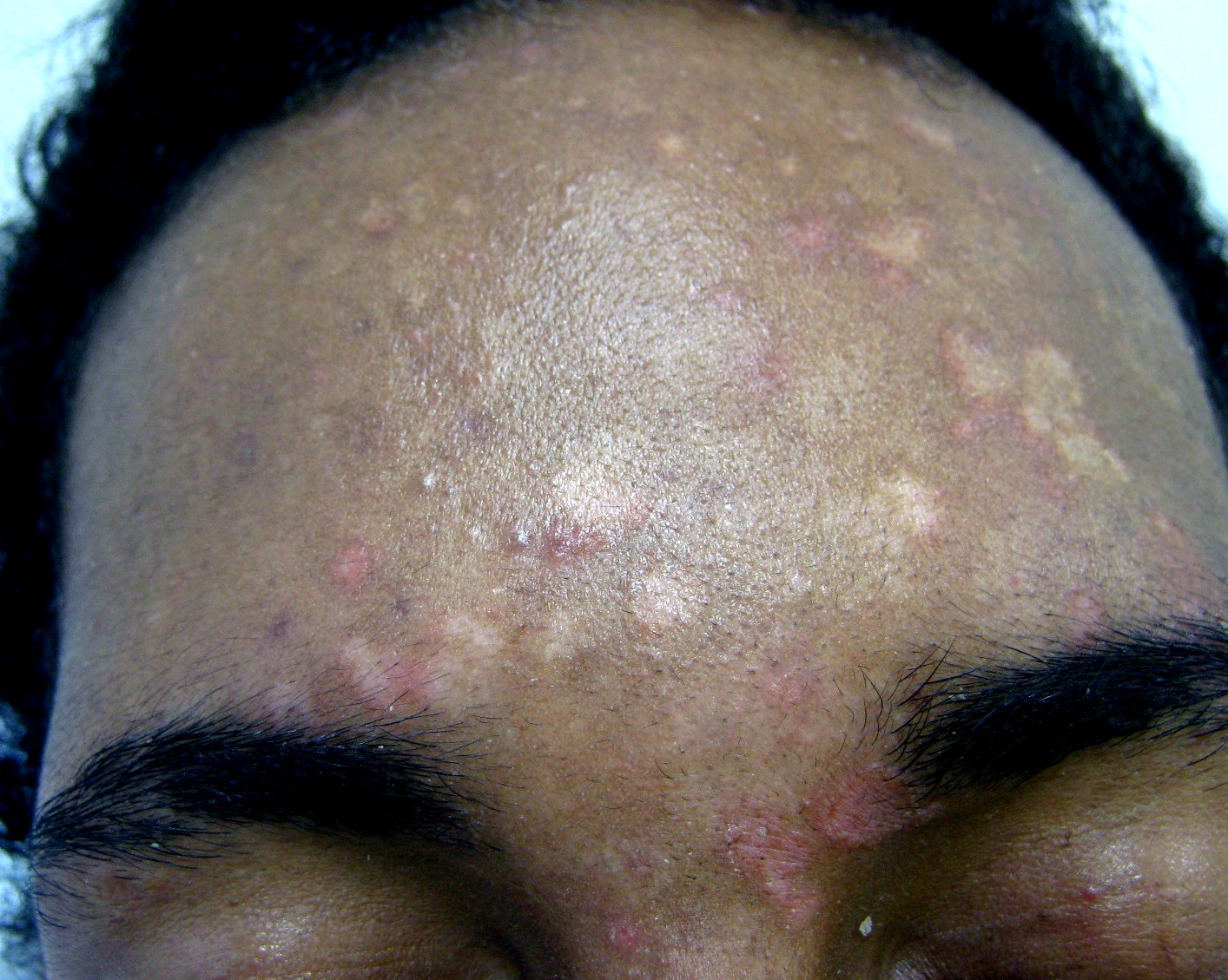|
Ciclopirox
Ciclopirox (sometimes known by the abbreviation CPX) is a synthetic antifungal agent for topical dermatologic treatment of superficial mycoses. It is most useful against tinea versicolor. It is sold under many brand names worldwide.Drugs.coInternational brand names for ciclopiroxPage accessed January 201, 2016 Medical uses Ciclopirox is indicated for the treatment of tinea pedis and tinea corporis due to ''Trichophyton rubrum'', ''Trichophyton mentagrophytes'' and ''Epidermophyton floccosum'', as well as seborrheic dermatitis. It is not to be used in the eyes or vagina, and nursing women should consult their doctors before use, since it is not known whether ciclopirox passes into human milk. A burning sensation may be felt when first applying ciclopirox on the skin. Nail infections In addition to other formulations, ciclopirox is used in lacquers for topical treatment of onychomycosis (fungal infections of the nails). A meta-analysis of the six trials of nail infections availa ... [...More Info...] [...Related Items...] OR: [Wikipedia] [Google] [Baidu] |
Antifungals
An antifungal medication, also known as an antimycotic medication, is a pharmaceutical fungicide or fungistatic used to treat and prevent mycosis such as athlete's foot, ringworm, candidiasis (thrush), serious systemic infections such as cryptococcal meningitis, and others. Such drugs are usually yes obtained by a doctor's prescription, but a few are available over the counter (OTC). Types of antifungal There are two types of antifungals: local and systemic. Local antifungals are usually administered topically or vaginally, depending on the condition being treated. Systemic antifungals are administered orally or intravenously. Of the clinically employed azole antifungals, only a handful are used systemically. These include ketoconazole, itraconazole, fluconazole, fosfluconazole, voriconazole, posaconazole, and isavuconazole. Examples of non-azole systemic antifungals include griseofulvin and terbinafine. Classes Polyenes A polyene is a molecule with multiple conjugated do ... [...More Info...] [...Related Items...] OR: [Wikipedia] [Google] [Baidu] |
Onychomycosis
Onychomycosis, also known as tinea unguium, is a fungal infection of the nail. Symptoms may include white or yellow nail discoloration, thickening of the nail, and separation of the nail from the nail bed. Toenails or fingernails may be affected, but it is more common for toenails. Complications may include cellulitis of the lower leg. A number of different types of fungus can cause onychomycosis, including dermatophytes and ''Fusarium''. Risk factors include athlete's foot, other nail diseases, exposure to someone with the condition, peripheral vascular disease, and poor immune function. The diagnosis is generally suspected based on the appearance and confirmed by laboratory testing. Onychomycosis does not necessarily require treatment. The antifungal medication terbinafine taken by mouth appears to be the most effective but is associated with liver problems. Trimming the affected nails when on treatment also appears useful. There is a ciclopirox-containing nail polish, but t ... [...More Info...] [...Related Items...] OR: [Wikipedia] [Google] [Baidu] |
Azole Antifungal
An antifungal medication, also known as an antimycotic medication, is a pharmaceutical fungicide or fungistatic used to treat and prevent mycosis such as athlete's foot, ringworm, candidiasis (thrush), serious systemic infections such as cryptococcal meningitis, and others. Such drugs are usually yes obtained by a doctor's prescription, but a few are available over the counter (OTC). Types of antifungal There are two types of antifungals: local and systemic. Local antifungals are usually administered topically or vaginally, depending on the condition being treated. Systemic antifungals are administered orally or intravenously. Of the clinically employed azole antifungals, only a handful are used systemically. These include ketoconazole, itraconazole, fluconazole, fosfluconazole, voriconazole, posaconazole, and isavuconazole. Examples of non-azole systemic antifungals include griseofulvin and terbinafine. Classes Polyenes A polyene is a molecule with multiple conjugated do ... [...More Info...] [...Related Items...] OR: [Wikipedia] [Google] [Baidu] |
Antifungal Medication
An antifungal medication, also known as an antimycotic medication, is a pharmaceutical fungicide or fungistatic used to treat and prevent mycosis such as athlete's foot, ringworm, candidiasis (thrush), serious systemic infections such as cryptococcal meningitis, and others. Such drugs are usually yes obtained by a doctor's prescription, but a few are available over the counter (OTC). Types of antifungal There are two types of antifungals: local and systemic. Local antifungals are usually administered topically or vaginally, depending on the condition being treated. Systemic antifungals are administered orally or intravenously. Of the clinically employed azole antifungals, only a handful are used systemically. These include ketoconazole, itraconazole, fluconazole, fosfluconazole, voriconazole, posaconazole, and isavuconazole. Examples of non-azole systemic antifungals include griseofulvin and terbinafine. Classes Polyenes A polyene is a molecule with multiple conjugated ... [...More Info...] [...Related Items...] OR: [Wikipedia] [Google] [Baidu] |
Amorolfine
Amorolfine (or amorolfin), is a morpholine antifungal drug that inhibits Δ14-sterol reductase and cholestenol Δ-isomerase, which depletes ergosterol Ergosterol (ergosta-5,7,22-trien-3β-ol) is a sterol found in cell membranes of fungi and protozoa, serving many of the same functions that cholesterol serves in animal cells. Because many fungi and protozoa cannot survive without ergosterol, the ... and causes ignosterol to accumulate in the fungal cytoplasmic cell membranes. Marketed as Curanail, Loceryl, Locetar, and Odenil, amorolfine is commonly available in the form of a Nail polish, nail lacquer, containing 5% amorolfine hydrochloride as the active ingredient. It is used to treat onychomycosis (fungal infection of the toe- and fingernails). Amorolfine 5% nail lacquer in once-weekly or twice-weekly applications was shown in two decades-old studies to be between 60% and 71% effective in treating toenail onychomycosis; complete cure rates three months after stopping treatment ... [...More Info...] [...Related Items...] OR: [Wikipedia] [Google] [Baidu] |
Tinea Versicolor
Tinea versicolor (also pityriasis versicolor) is a condition characterized by a skin eruption on the trunk and proximal extremities. The majority of tinea versicolor is caused by the fungus '' Malassezia globosa'', although ''Malassezia furfur'' is responsible for a small number of cases. These yeasts are normally found on the human skin and become troublesome only under certain circumstances, such as a warm and humid environment, although the exact conditions that cause initiation of the disease process are poorly understood. The condition pityriasis versicolor was first identified in 1846. Versicolor comes from the Latin ' 'to turn' + ''color''. It is also commonly referred to as Peter Elam's disease in many parts of South Asia. Signs and symptoms The symptoms of this condition include: * Occasional fine scaling of the skin producing a very superficial ash-like scale * Pale, dark tan, or pink in color, with a reddish undertone that can darken when the patient is overheated, s ... [...More Info...] [...Related Items...] OR: [Wikipedia] [Google] [Baidu] |
Tinea Pedis
Dermatophytosis, also known as ringworm, is a fungal infection of the skin. Typically it results in a red, itchy, scaly, circular rash. Hair loss may occur in the area affected. Symptoms begin four to fourteen days after exposure. Multiple areas can be affected at a given time. About 40 types of fungus can cause ringworm. They are typically of the ''Trichophyton'', ''Microsporum'', or ''Epidermophyton'' type. Risk factors include using public showers, contact sports such as wrestling, excessive sweating, contact with animals, obesity, and poor immune function. Ringworm can spread from other animals or between people. Diagnosis is often based on the appearance and symptoms. It may be confirmed by either culturing or looking at a skin scraping under a microscope. Prevention is by keeping the skin dry, not walking barefoot in public, and not sharing personal items. Treatment is typically with antifungal creams such as clotrimazole or miconazole. If the scalp is involved, anti ... [...More Info...] [...Related Items...] OR: [Wikipedia] [Google] [Baidu] |
Mechanism Of Action
In pharmacology, the term mechanism of action (MOA) refers to the specific biochemical interaction through which a drug substance produces its pharmacological effect. A mechanism of action usually includes mention of the specific molecular targets to which the drug binds, such as an enzyme or receptor. Receptor sites have specific affinities for drugs based on the chemical structure of the drug, as well as the specific action that occurs there. Drugs that do not bind to receptors produce their corresponding therapeutic effect by simply interacting with chemical or physical properties in the body. Common examples of drugs that work in this way are antacids and laxatives. In contrast, a mode of action (MoA) describes functional or anatomical changes, at the cellular level, resulting from the exposure of a living organism to a substance. Importance Elucidating the mechanism of action of novel drugs and medications is important for several reasons: * In the case of anti-infectiv ... [...More Info...] [...Related Items...] OR: [Wikipedia] [Google] [Baidu] |
Salt (chemistry)
In chemistry, a salt is a chemical compound consisting of an ionic assembly of positively charged cations and negatively charged anions, which results in a compound with no net electric charge. A common example is table salt, with positively charged sodium ions and negatively charged chloride ions. The component ions in a salt compound can be either inorganic, such as chloride (Cl−), or organic, such as acetate (). Each ion can be either monatomic, such as fluoride (F−), or polyatomic, such as sulfate (). Types of salt Salts can be classified in a variety of ways. Salts that produce hydroxide ions when dissolved in water are called ''alkali salts'' and salts that produce hydrogen ions when dissolved in water are called ''acid salts''. ''Neutral salts'' are those salts that are neither acidic nor basic. Zwitterions contain an anionic and a cationic centre in the same molecule, but are not considered salts. Examples of zwitterions are amino acids, many metabolites, peptid ... [...More Info...] [...Related Items...] OR: [Wikipedia] [Google] [Baidu] |
Olamine
Ethanolamine (2-aminoethanol, monoethanolamine, ETA, or MEA) is an organic chemical compound with the formula or . The molecule is bifunctional, containing both a primary amine and a primary alcohol. Ethanolamine is a colorless, viscous liquid with an odor reminiscent of ammonia.. ETA molecules are a component in the formation of cellular membranes and are thus a molecular building block for life. It was thought to exist only on Earth and on certain asteroids, but in 2021 evidence was found that ETA molecules exist in interstellar space. Derivatives of ethanolamine are widespread in nature; e.g., lipids, as precursor of a variety of ''N''-acylethanolamines (NAEs), that modulate several animal and plant physiological processes such as seed germination, plant–pathogen interactions, chloroplast development and flowering, as well as precursor, combined with arachidonic acid 20: 4, ω-6), to form the endocannabinoid anandamide (AEA: ; 20:4, ω-6). The ethanolamines comprise a gro ... [...More Info...] [...Related Items...] OR: [Wikipedia] [Google] [Baidu] |
Tautomer
Tautomers () are structural isomers (constitutional isomers) of chemical compounds that readily interconvert. The chemical reaction interconverting the two is called tautomerization. This conversion commonly results from the relocation of a hydrogen atom within the compound. The phenomenon of tautomerization is called tautomerism, also called desmotropism. Tautomerism is for example relevant to the behavior of amino acids and nucleic acids, two of the fundamental building blocks of life. Care should be taken not to confuse tautomers with depictions of "contributing structures" in chemical resonance. Tautomers are distinct chemical species that can be distinguished by their differing atomic connectivities, molecular geometries, and physicochemical and spectroscopic properties, whereas resonance forms are merely alternative Lewis structure (valence bond theory) depictions of a single chemical species, whose true structure is best described as the "average" of the idealized, hypothe ... [...More Info...] [...Related Items...] OR: [Wikipedia] [Google] [Baidu] |



